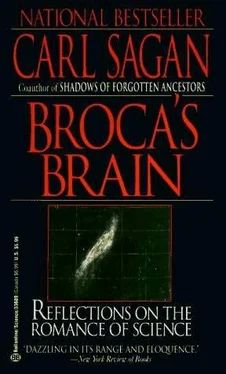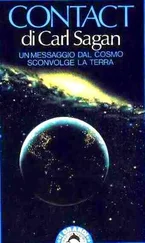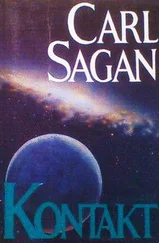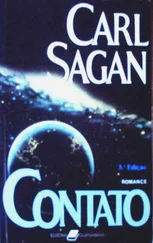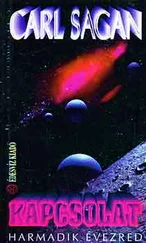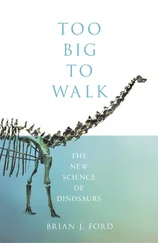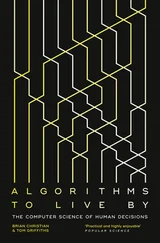Carl Sagan - Broca's Brain - The Romance of Science
Здесь есть возможность читать онлайн «Carl Sagan - Broca's Brain - The Romance of Science» весь текст электронной книги совершенно бесплатно (целиком полную версию без сокращений). В некоторых случаях можно слушать аудио, скачать через торрент в формате fb2 и присутствует краткое содержание. Жанр: Физика, на английском языке. Описание произведения, (предисловие) а так же отзывы посетителей доступны на портале библиотеки ЛибКат.
- Название:Broca's Brain: The Romance of Science
- Автор:
- Жанр:
- Год:неизвестен
- ISBN:нет данных
- Рейтинг книги:3 / 5. Голосов: 1
-
Избранное:Добавить в избранное
- Отзывы:
-
Ваша оценка:
- 60
- 1
- 2
- 3
- 4
- 5
Broca's Brain: The Romance of Science: краткое содержание, описание и аннотация
Предлагаем к чтению аннотацию, описание, краткое содержание или предисловие (зависит от того, что написал сам автор книги «Broca's Brain: The Romance of Science»). Если вы не нашли необходимую информацию о книге — напишите в комментариях, мы постараемся отыскать её.
Broca's Brain: The Romance of Science — читать онлайн бесплатно полную книгу (весь текст) целиком
Ниже представлен текст книги, разбитый по страницам. Система сохранения места последней прочитанной страницы, позволяет с удобством читать онлайн бесплатно книгу «Broca's Brain: The Romance of Science», без необходимости каждый раз заново искать на чём Вы остановились. Поставьте закладку, и сможете в любой момент перейти на страницу, на которой закончили чтение.
Интервал:
Закладка:
In the long litany of “ancient astronaut” pop archaeology, the cases of apparent interest have perfectly reasonable alternative explanations, or have been misreported, or are simple prevarications, hoaxes and distortions. This description applies to arguments about the Piri Reis map, the Easter Island monoliths, the heroic drawings on the plains of Nazca, and various artifacts from Mexico, Uzbekistan and China.
And yet, it would be so easy for an advanced extraterrestrial civilization to leave a completely unambiguous calling card of their visit. For example, many nuclear physicists believe that there is an “island of stability” of atomic nuclei, near a hypothetical superheavy atom with about 114 protons and about 184 neutrons. All chemical elements heavier than uranium (with 238 protons and neutrons in its nucleus) spontaneously decay in cosmically short periods of time. But there is reason to think that the binding between protons and neutrons is such that stable elements would be produced if nuclei having about 114 protons and 184 neutrons could be constructed. Such a construction is just beyond our present technology, and clearly beyond the technology of our ancestors. A metal artifact containing such elements would be unambiguous evidence of an advanced extraterrestrial civilization in our past. Or consider the element technetium, whose most stable form has 99 protons and neutrons. Half of it radioactively decays to other elements in about 200,000 years, half of the remainder is gone in another 200,000 years, and so on. As a result, any technetium formed by stars with the other elements billions of years ago must all be gone by now. Thus, terrestrial technetium can only be of artificial origin, as its very name indicates. A technetium artifact could have only one meaning. Similarly, there are common elements on Earth that are immiscible; for example, aluminum and lead. If you melt them together, the lead, being considerably heavier, sinks to the bottom. The aluminum floats to the top. However, in the zero g conditions of spaceflight there is no gravity in the melt to pull the heavier lead down, and exotic alloys such as AL/Pb can be produced. One of the objectives of NASA’s early Shuttle missions will be to test out such alloying techniques. Any message written on an aluminum/lead alloy and retrieved from an ancient civilization would certainly commend itself to our attention today.
It is also possible that the content rather than the material of the message would clearly point to a science or technology beyond the abilities of our ancestors: for example, a vector calculus rendition of Maxwell’s equations (with or without magnetic monopoles), or a graphical representation of the Planck black-body distribution for several different temperatures, or a derivation of the Lorentz transformation of special relativity. Even if the ancient civilization could not understand such writings, they might revere them as holy. But no cases of this sort have emerged-despite what is clearly a profitable market for tales of ancient or modern extraterrestrial astronauts. There have been debates on the purity of magnesium samples from purported crashed UFOs, but their purity was within the competence of American technology at the time of the incident. A supposed star map said to be retrieved (from memory) from the interior of a flying saucer does not, as alleged, resemble the relative positions of the nearest stars like the Sun; in fact, a close examination shows it to be not much better than the “star map” which would be produced if you took an old-fashioned quill pen and splattered a few blank pages with ink spots. With one apparent exception, there are no stories sufficiently detailed to dispose of other explanations and sufficiently accurate to portray correctly modern physics or astronomy to a prescientific or pretechnical people. The one exception is the remarkable mythology surrounding the star Sirius that is held by the Dogon people of the Republic of Mali.
There are at most a few hundred thousand Dogon alive today, and they have been studied intensively by anthropologists only since the 1930s. There are some elements of their mythology that are reminiscent of the legends of the ancient Egyptian civilization, and some anthropologists have assumed a weak Dogon cultural connection with ancient Egypt. The helical risings of Sirius were central to the Egyptian calendar and used to predict the inundations of the Nile. The most striking aspects of Dogon astronomy have been recounted by Marcel Griaule, a French anthropologist working in the 1930s and 1940s. While there is no reason to doubt Griaule’s account, it is important to note that there is no earlier Western record of these remarkable Dogon folk beliefs and that all the information has been funneled through Griaule. The story has recently been popularized by a British writer, R. K. G. Temple.
In contrast to almost all prescientific societies, the Dogon hold that the planets as well as the Earth rotate about their axes and revolve about the Sun. This is a conclusion that can, of course, be achieved without high technology, as Copernicus demonstrated, but it is a very rare insight among the peoples of the Earth. It was taught, however, in ancient Greece by Pythagoras and by Philolaus, who perhaps held, in Laplace’s words, “that the planets were inhabited and that the stars were suns, disseminated in space, being themselves centers of planetary systems.” Such teachings, among a wide variety of contradictory ideas, might be just an inspired lucky guess.
The ancient Greeks believed there were only four elements-earth, fire, water and air-from which all else was constructed. Among the pre-Socratic philosophers there were those who made special advocacy for each one of these elements. If it had later turned out that the universe was indeed made more of one of these elements than another, we should not attribute remarkable prescience to the pre-Socratic philosopher who made the proposal. One of them was bound to be right on statistical grounds alone. In the same way, if we have several hundred or several thousand cultures, each with its own cosmology, we should not be astounded if, every now and then, purely by chance, one of them proposes an idea that is not only correct but also impossible for them to have deduced.
But, according to Temple, the Dogon go further. They hold that Jupiter has four satellites and that Saturn is encircled by a ring. It is perhaps possible that individuals of extraordinary eyesight under superb seeing conditions could, in the absence of a telescope, have observed the Galilean satellites of Jupiter and the rings of Saturn. But this is at the bare edge of plausibility. Unlike every astronomer before Kepler, the Dogon are said to depict the planets moving correctly in elliptical, not circular, orbits.
More striking still is the Dogon belief about Sirius, the brightest star in the sky. They contend that it has a dark and invisible companion star which orbits Sirius (and, Temple says, in an elliptical orbit) once every fifty years. They state that the companion star is very small and very heavy, made of a special metal called “Sagala” which is not found on Earth.
The remarkable fact is that the visible star, Sirius A, does have an extraordinary dark companion, Sirius B, which orbits it in an elliptical orbit once each 50.04 ±0.09 years. Sirius B is the first example of a white dwarf star discovered by modern astrophysics. Its matter is in a state called “relativistically degenerate,” which does not exist on Earth, and since the electrons are not bound to the nuclei in such degenerate matter, it can properly be described as metallic. Since Sirius A is called the Dog Star, Sirius B has sometimes been dubbed “The Pup.”
At first glance the Sirius legend of the Dogon seems to be the best candidate evidence available today for past contact with an advanced extraterrestrial civilization. As we begin a closer look at this story, however, let us remember that the Dogon astronomical tradition is purely oral, that it dates with certainty only from the 1930s and that the diagrams are written with sticks in sand. (Incidentally, there is some evidence that the Dogon like to frame pictures with an ellipse, and that Temple may be mistaken about the claim that the planets and Sirius B move in elliptical orbits in Dogon mythology.)
Читать дальшеИнтервал:
Закладка:
Похожие книги на «Broca's Brain: The Romance of Science»
Представляем Вашему вниманию похожие книги на «Broca's Brain: The Romance of Science» списком для выбора. Мы отобрали схожую по названию и смыслу литературу в надежде предоставить читателям больше вариантов отыскать новые, интересные, ещё непрочитанные произведения.
Обсуждение, отзывы о книге «Broca's Brain: The Romance of Science» и просто собственные мнения читателей. Оставьте ваши комментарии, напишите, что Вы думаете о произведении, его смысле или главных героях. Укажите что конкретно понравилось, а что нет, и почему Вы так считаете.
